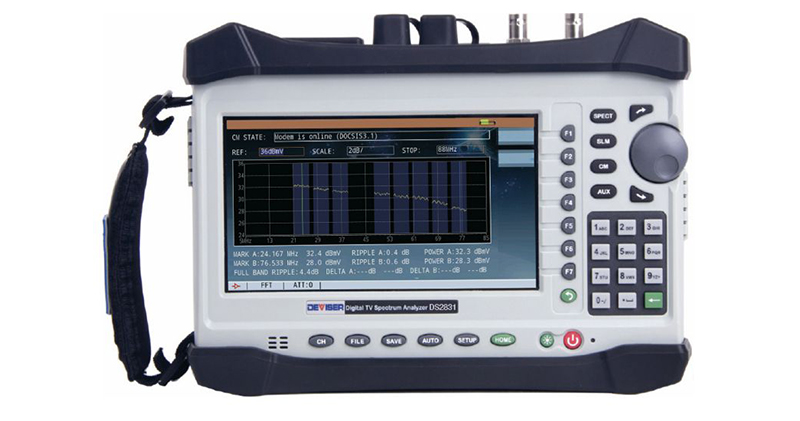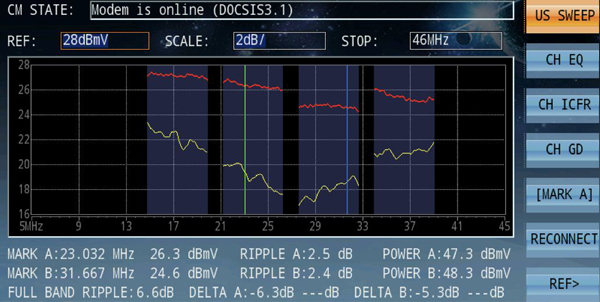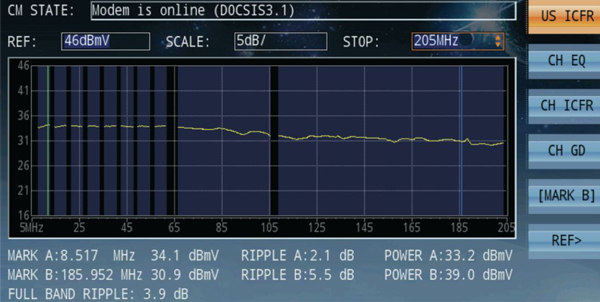PNM and Applications Make their way into Field Portable and Headend Test Equipment
By Bernie Cadieux
As DOCSIS continues to spread its wings, new applications are emerging, too. As previously mentioned in last year’s advertorial, non-intrusive measurements leveraging adaptive equalization coefficients are being introduced more and more as non-intrusive alternatives to more traditional (and sometimes intrusive) methods. This can now be applied to upstream frequency response and TDR functions. We will talk about TDR functions in a later article.

In general, cable operators gather frequency response data for their HFC networks to ensure proper flatness and unity gain along the path of the signal, for both upstream and downstream. From a frequency response (FR) point of view, downstream FR is relatively simple and does not require extensive or complicated equipment as the signals present in the downstream path generally fill the spectrum adequately to ensure continuous and contiguous data. With some calculations and smoothing algorithtms, this usually produces enough information to plot accurately what the actual downstream frequency response is.
Upstream FR is a whole different matter. Traditional methods have long proved challenging, especially when considering the human element part of headend and field equipment setup. The typical equipment required to perform these tests is expensive, not easy to deploy, and especially risky to use if one wants to benefit from the highest resolution available. In many cases, field reference points are inserted between upstream carriers, and if proper care is not applied, those reference points might find themselves at the wrong frequency and interfere with the active upstream signals.
With PNM frequency response data, the user has a few clear benefits:
- increased resolution compared to traditional sweep reference points. The example in Figure 1 shows 4x upstream SC-QAM signals (each 6.4 MHz wide), providing upstream FR information for 20.48 MHz of active spectrum (4 x 5.12 MHz symbol rate bandwidth).
- zero possibility of interference since the technology leverages your existing DOCSIS platform.
- a HUGE capital saving since no additional headend upstream sweep receivers are required. The existing CMTS and modems already being used for HSD service are a key part of upstream FR testing.
- a future benefit will be when operators switch their upstream to OFDMA modulation, which will provide a more complete frequency response graph since no “gaps” will show between SC-QAM carriers. Technically, even if diplex filters eventually reach 200 MHz, one can easily conceive inserting 2x 96 MHz OFDMA channels and the field technician can get a full return path frequency response. An example can be seen in Figure 2 with a mix of SC-QAM channels and OFDMA channels.



 Bernie Cadieux,
Bernie Cadieux,
Sales & Marketing, CATV & Optical group,
Deviser Instruments
bcadieux@deviserinstruments.com
deviserinstruments.com
408.955.0938
Bernie joined Deviser Instruments in January 2015, with primary responsibilities to the North American market (Canada, USA, and Mexico), as well as Europe, Australia ,and Japan. Bernie has 25 years of previous experience with spectrum analyzers and signal level meters at Avantron Technologies and Sunrise Telecom. Bernie is currently working with his engineering teammates at Deviser Instruments on upstream frequency response testing with PNM and PNM TDR functionality.


